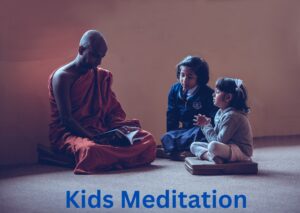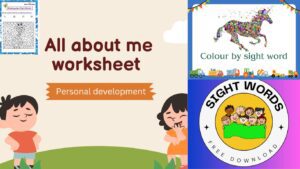Finding the best way to teach kids meditation.।। Sleep meditation for kids.
In an increasingly fast-paced world filled with academic pressures and social dynamics, children often find themselves navigating a landscape that can feel overwhelming. However, meditation offers a beacon of hope, giving young minds tools to develop emotional regulation, focus, and overall well-being. By introducing meditation at a young age, we can enable children to develop resilience, adapt to challenges, and develop a sense of inner peace.
Best way to teach sleep meditation for kids.

Every parent knows that getting their kids to be still and explore silence can be challenging. Finding the best way to teach sleep meditation for kids is a journey that can take a lot of effort. It is important to keep a meditation practice consistent with the creative and active minds of a young audience. When a young child comes into the world, they learn everything they see and hear. If they enjoy meditation, they can learn it very easily. They will do it easily. If we ask a child how many breaths you take in 1 minute, that counts. They treat it like a game they play. Thus, we can start meditating.
Benefits of Meditation for Children and also Benefits of Sleep Meditation for Kids.

Meditation is not just an adult practice; it also has profound benefits for children. Regular meditation can help children manage their emotions, leading to better emotional regulation. As they learn to observe their thoughts and feelings without judgment, they can develop healthy responses to depression, anxiety, and stress. In addition, meditation increases focus and concentration, important skills in an age of digital distraction. Children who meditate often report improved attention spans and academic performance.
To start sleep meditation for kids Age-appropriate techniques.
To make meditation accessible and enjoyable for children, it is essential to include age-appropriate techniques. Guided imagery is a great way to engage a child’s imagination. By leading them through a journey—a walk in a tranquil forest or a visit to a magical castle—children can visualize serene landscapes, promoting relaxation and reducing anxiety.
Breathing exercises are another effective method. Teaching children to take deep, slow breaths can help them develop mindfulness. A simple technique is the “5-5-5 method,” where they inhale for five seconds, hold for five seconds, and exhale for five seconds. This practice not only calms the mind but also creates a momentary break in their busy lives.
Mindfulness games, such as “I Spy,” with a twist, can turn meditation into a fun activity. Encourage children to focus on their surroundings, identifying colors, shapes, or sounds, which fosters present-moment awareness.

Building Resilience Through Meditation- In the face of modern challenges, meditation children act as a cornerstone for building resilience within. By learning mindfulness practices, children develop the ability to pause before reacting to stressors, enabling them to more easily navigate conflicts. This emotional toolkit is invaluable in managing academic stress and building healthy relationships with peers.
Establishing a Calm Routine- Creating a calming routine is important to integrating meditation into a child’s daily life. Setting aside a specific time each day, such as morning or bedtime, can help establish a sense of stability. A family meditation session can enhance this practice, allowing parents and children to connect on a deeper level while creating a supportive environment.
**Practical Advice for Parents and Teachers**
Introducing meditation to children requires creativity and enthusiasm. Here are some practical tips:
1. **Lead by Example**:
Demonstrate your own meditation practice; share your experiences and benefits.
2. **Start small**:
Invite children to share their thoughts and experiences after the meditation, encouraging open conversations about their feelings.
5. **Make it fun**:

